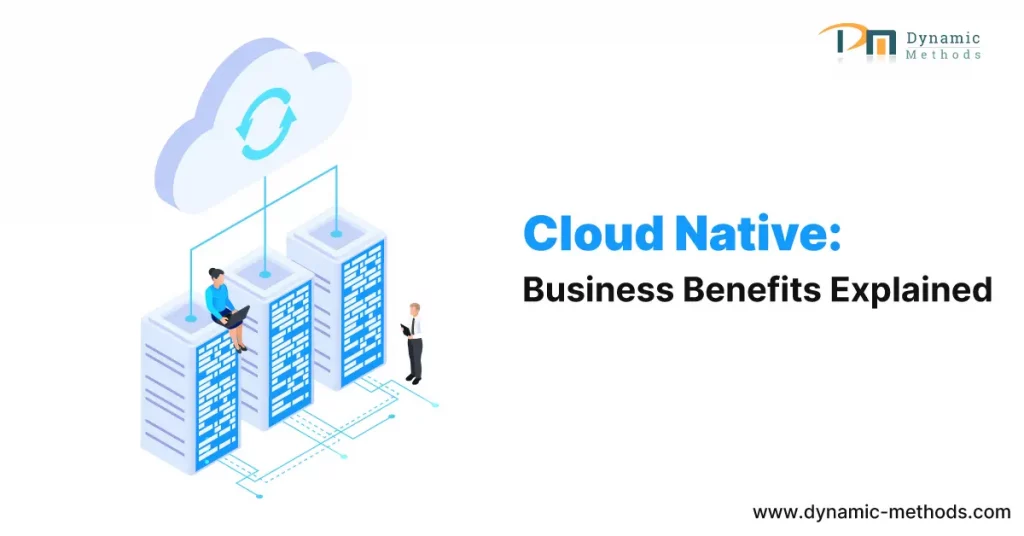What is Cloud Native and How It Benefits Businesses

Introduction
In today’s digital landscape, businesses strive to optimize their operations, increase efficiency, and deliver value to customers. One approach that has gained significant attention is “Cloud Native.” This article explores the concept of Cloud Native and its far-reaching benefits for businesses.
Defining Cloud Native:
Cloud Native is a software development approach that emphasizes building and running applications using cloud computing principles. It involves designing applications specifically for the cloud environment, leveraging the advantages of cloud infrastructure and services. Cloud Native applications are containerized, dynamically orchestrated, and highly scalable.
Key Components of Cloud Native
To grasp Cloud Native better, understanding its key components is crucial. These include containerization, microservices architecture, dynamic orchestration, and DevOps practices. Containerization enables portable and consistent application packaging with dependencies. Microservices architecture breaks down complex applications into smaller, loosely coupled services for scalability and agility. Dynamic orchestration platforms like Kubernetes automate the management and scaling of containerized applications. DevOps practices ensure collaboration, continuous integration/continuous deployment (CI/CD), and faster software delivery.
Benefits of Cloud Native for Businesses
Cloud Native offers numerous benefits to businesses, empowering them to adapt and thrive in the digital age.
1. Improved Scalability and Flexibility
Cloud Native applications can seamlessly scale horizontally and vertically, enabling businesses to handle varying workloads. On-demand resource provisioning allows for dynamic allocation, ensuring optimal performance during peak periods.
2. Cost Efficiency
By leveraging cloud infrastructure, businesses can avoid significant upfront hardware investments and pay only for the resources they consume. The scalability of Cloud Native applications optimizes resource utilization, reducing operational costs.
3. Faster Time to Market
Cloud Native enables rapid application development and deployment, significantly reducing time-to-market. The modular and scalable nature of Cloud Native architectures facilitates continuous integration, delivery, and deployment, empowering businesses to respond quickly to market demands.
4. Enhanced Reliability and Resilience
Cloud Native applications are designed to be resilient, leveraging features like self-healing, fault tolerance, and automated scaling. This ensures high availability and minimal downtime. Additionally, cloud platforms provide built-in backup and disaster recovery mechanisms, enhancing overall system reliability.
5. Simplified Deployment and Management
Containerization and dynamic orchestration platforms simplify the deployment and management of Cloud Native applications. Containerization ensures consistent runtime across environments, while dynamic orchestration automates deployment, scaling, and monitoring, reducing operational complexity.
6. Increased Innovation and Experimentation
Cloud Native fosters a culture of innovation and experimentation within businesses. The modular nature of microservices allows independent development and deployment, empowering teams to innovate and iterate rapidly. This flexibility encourages the exploration of new ideas and quick pivoting based on market feedback.
7. Security and Compliance
Cloud Native offers robust security features and compliance capabilities. Cloud providers invest heavily in securing their infrastructure, providing advanced security controls, encryption, and access management. Compliance certifications and frameworks assist businesses in meeting industry-specific regulations and standards.
Challenges of Adopting Cloud Native
While the benefits of Cloud Native are substantial, businesses may encounter challenges during adoption. Common hurdles include migrating existing legacy systems, upskilling the workforce, driving cultural shifts, and initial cost considerations.
Best Practices for Adopting Cloud Native
To ensure a successful transition to Cloud Native, businesses should consider the following best practices:
- Start with smaller projects to gain experience before scaling up.
- Embrace automation for provisioning, deployment, monitoring, and scaling.
- Invest in training and upskilling to equip teams with Cloud Native expertise.
- Adopt a security-first mindset and continuously update security measures.
- Foster cross-functional collaboration between development, operations, and security teams.
Real-Life Examples of Successful Cloud Native Implementations
Several organizations have embraced Cloud Native and achieved remarkable results. Notable examples include Netflix, which transformed its architecture for seamless scalability and global content delivery, Spotify for enhanced music streaming agility, and Capital One for faster feature releases and improved security in banking applications.
Conclusion
Cloud Native offers businesses a competitive edge in the digital landscape. Leveraging cloud infrastructure, containerization, microservices, dynamic orchestration, and DevOps practices, organizations can achieve scalability, cost efficiency, faster time to market, enhanced reliability, simplified management, increased innovation, and robust security. Though challenges exist, following best practices and learning from successful implementations enable businesses to navigate the Cloud Native journey effectively.
Please let us know if you have any inquiries or would like to discuss your Cloud Native project. Contact us today to explore how Cloud Native can transform your business and gain a competitive advantage in the digital realm.
FAQs
1. Is Cloud Native the same as cloud-based?
No, Cloud Native refers to a software development approach that takes full advantage of cloud computing principles, while being cloud-based simply means utilizing cloud infrastructure or services without necessarily following Cloud Native practices.
2. Do businesses need to rewrite their applications to adopt Cloud Native?
Not necessarily. While rewriting applications from the ground up can offer maximum benefits, organizations can also take a gradual approach by modernizing and containerizing existing applications.
3. Can small businesses benefit from Cloud Native?
Absolutely. Cloud Native brings scalability, cost efficiency, and faster time to market, which benefits businesses of all sizes. Small businesses can effectively compete and respond to market demands with Cloud Native.
4. Is Cloud Native limited to specific industries?
No, Cloud Native is applicable across various industries. Organizations from e-commerce, finance, healthcare, entertainment, and more have successfully adopted Cloud Native approaches to drive innovation and improve their business outcomes.
5. How can businesses ensure data security in a Cloud Native environment
To ensure data security, businesses should follow security best practices, employ encryption, access controls, and regularly update security measures. Partnering with cloud providers offering robust security features and compliance capabilities further enhances data protection.





